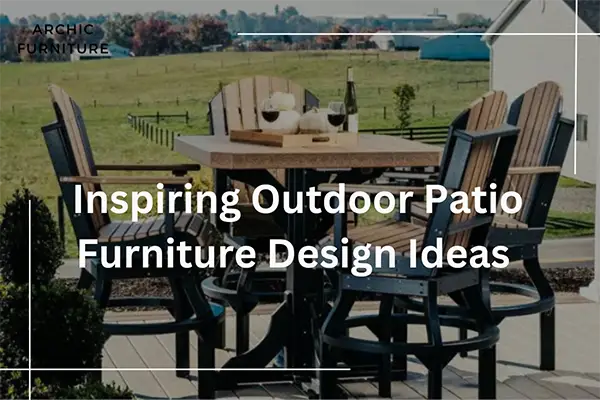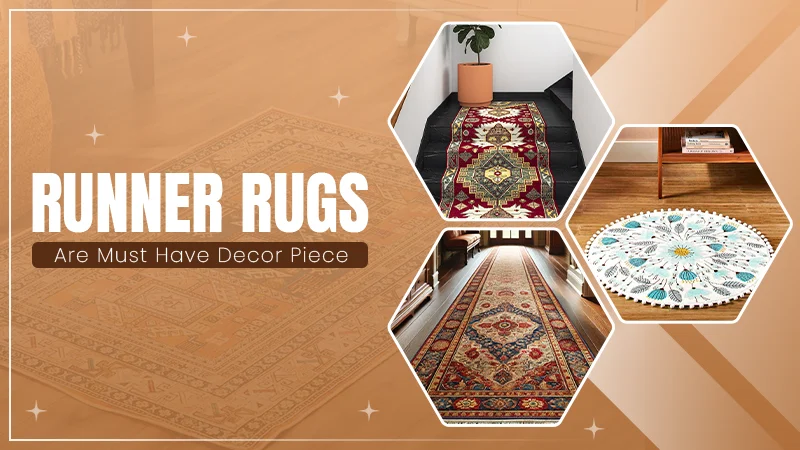
Your patio is more than just outdoor space, it’s your personal retreat where morning coffee tastes better and evening conversations linger longer. But too many patios end up looking like furniture showroom rejects instead of the outdoor sanctuary they could become.
The difference between a patio that gets used and one that gets ignored comes down to thoughtful design choices. When you combine quality pieces like LuxCraft outdoor furniture with smart layout decisions, you create a space that actually draws people outside.
Most homeowners make the mistake of treating their patio like an afterthought, grabbing whatever furniture is on sale and calling it done. But the best outdoor spaces feel intentional, comfortable, and uniquely yours.
Why Your Patio Design Actually Matters
Your outdoor space affects how you live more than you might realize. A well-designed patio extends your living area and creates natural gathering spots for family and friends. It becomes the place where kids play while dinner cooks on the grill and where adults unwind after long days.
According to landscape architect Julie Moir Messervy, “Outdoor spaces that are thoughtfully designed become the heart of family life, providing a seamless transition between indoor comfort and natural beauty. The furniture choices you make determine whether that space feels like home or just another outdoor area”
The key is creating zones that work for different activities while maintaining a cohesive look that reflects your personal style.
Creating Functional Zones That Flow
Think of your patio like rooms in your house – each area should have a purpose but feel connected to the whole. Start by identifying how you actually want to use the space. Do you host dinner parties? Need a quiet reading spot? Want space for kids to play?
Map out three basic zones: dining, lounging, and activity areas. Your dining zone needs a table that fits your typical group size plus room for people to move around chairs. The lounging area should encourage conversation with seating arranged so people can see each other without craning their necks.
| Patio Size | Dining Capacity | Furniture Recommendations |
| Small (100-150 sq ft) | 2-4 people | Bistro set + 2 lounge chairs |
| Medium (150-300 sq ft) | 4-6 people | Round table + sectional seating |
| Large (300+ sq ft) | 6+ people | Multiple zones with varied seating |
The activity area can be as simple as open space for kids to play or as elaborate as an outdoor kitchen setup. The key is ensuring each zone feels distinct but connected through consistent design elements.
Mixing Materials for Visual Interest
Flat, monotonous furniture arrangements kill the personality of outdoor spaces. The most interesting patios combine different textures and materials that complement rather than match perfectly.
Start with one dominant material as your base, maybe teak for a warm, natural feel or aluminum for a sleek, modern look. Then add contrasting elements through accent pieces and accessories.
Wicker pairs beautifully with metal frames for a relaxed but structured feel. Stone or concrete elements ground lighter materials and add substance. Wood brings warmth to any combination, especially when it weathers naturally over time.
The trick is keeping your color palette consistent even when materials vary. Three colors maximum usually works best – a neutral base, one accent color, and small pops of a brighter shade.
Multifunctional Pieces That Earn Their Space
Outdoor storage disappears faster than you think. Between cushions, outdoor games, gardening tools, and entertainment supplies, you need furniture that works double duty.
Storage benches provide seating while hiding clutter. Ottomans work as footrests, extra seating, and side tables. Coffee tables with built-in storage keep outdoor entertaining supplies within reach but out of sight.
Modular seating systems adapt to different group sizes and occasions. You can arrange pieces for intimate conversations or open them up for larger gatherings. Look for pieces that nest or stack when not in use.
Style Approaches That Actually Work
- Modern Minimalist: Clean lines, neutral colors, and uncluttered arrangements create a sophisticated outdoor room. Focus on quality over quantity with statement pieces that stand alone. Materials like powder-coated aluminum and teak work well here.
- Bohemian Relaxed: Layer textures, patterns, and colors for a collected-over-time feel. Mix vintage finds with new pieces. Add plenty of soft furnishings like outdoor rugs, throw pillows, and blankets. Plants in interesting containers complete the look.
- Classic Traditional: Timeless pieces in natural materials create a refined but comfortable atmosphere. Think wrought iron with intricate details, rich wood tones, and classic proportions. This style ages well and suits most home architectures.
- Industrial Modern: Metal furniture with clean lines, concrete elements, and minimal ornamentation. This style works especially well with contemporary homes and urban settings.
Comfort Elements That Make the Difference
Hard furniture doesn’t invite relaxation. The most-used outdoor spaces prioritize comfort through strategic additions that make sitting outside as appealing as staying indoors.
Weather-resistant cushions transform basic seating into places people actually want to spend time. Look for fabrics that resist fading, mold, and moisture while still feeling soft and inviting.
Outdoor rugs define seating areas and add warmth underfoot. They also help tie different furniture pieces together visually. Choose patterns and colors that complement your overall scheme without overwhelming the space.
Shade makes summer afternoons bearable and extends the usable hours of your patio. Umbrellas, pergolas, or shade sails protect both people and furniture while creating more intimate spaces within larger areas.
Sustainable Choices That Look Great
Environmental consciousness doesn’t mean sacrificing style. Many of the most attractive outdoor furniture options also happen to be the most sustainable.
Recycled plastic lumber looks like wood but requires no maintenance and diverts waste from landfills. Reclaimed wood brings character and history to new furniture pieces. Aluminum is infinitely recyclable and lightweight.
Look for furniture made locally to reduce transportation impacts. Pieces built to last generations may cost more upfront but provide better long-term value and environmental benefits.
Lighting for Evening Magic
Daytime-only patios miss half their potential. Strategic lighting extends usable hours and creates an atmosphere that makes outdoor dining and entertaining more appealing.
String lights provide ambient lighting that flatters faces and creates a festive mood. Solar options eliminate wiring concerns while providing reliable illumination.
Lanterns and candles add warmth and romance. Battery-powered LED candles give you the ambiance without wind and safety concerns.
Consider uplighting for plants and architectural features. Subtle illumination of key elements creates depth and visual interest after dark.
Common Design Mistakes to Avoid
Pushing all furniture against walls makes spaces feel awkward and conversation difficult. Float seating groups away from edges to create more intimate arrangements.
Choosing furniture based on price alone usually backfires. Cheap pieces often look cheap and need replacement sooner, making them more expensive long-term.
Ignoring scale relationships creates visual chaos. Tiny furniture on large patios looks lost, while oversized pieces overwhelm small spaces.
Forgetting about weather protection shortens furniture life and creates maintenance headaches. Factor in storage needs and protection from elements when making selections.
Professional vs. DIY Considerations
Complex installations like built-in seating, outdoor kitchens, or extensive lighting systems benefit from professional design and installation. These investments significantly impact your home’s value and your daily enjoyment.
Furniture arrangement, accessory selection, and seasonal updates work well as DIY projects. Most homeowners can successfully handle these aspects with some planning and patience.
Quality furniture suppliers like Archic Furniture provide both individual pieces and complete design guidance to help create cohesive outdoor spaces that reflect your lifestyle and preferences.
Making Your Investment Last
Outdoor furniture faces challenging conditions year-round. Protecting your investment requires some planning but pays off in extended furniture life and better appearance.
Clean furniture regularly with appropriate products for each material type. Cover or store pieces during extreme weather when possible. Treat wood annually and touch up metal finishes as needed.
Choose pieces built for your specific climate. Coastal areas need corrosion-resistant materials. Hot, sunny climates require UV-resistant finishes. Cold regions need furniture that can handle freeze-thaw cycles.
Quality construction costs more initially but provides better long-term value through reduced replacement needs and better appearance over time.
Seasonal Adaptability
Great outdoor spaces work across seasons, not just during perfect weather. Plan for different uses throughout the year to maximize your investment.
Lightweight pieces can move to protected areas during storms. Modular systems adapt to different group sizes and weather conditions. Fire features extend comfortable outdoor time into cooler months.
Storage solutions keep seasonal accessories organized and protected. Having the right pieces readily available makes seasonal transitions smoother and more likely to happen.
Your patio should enhance your lifestyle, not create another maintenance burden. When designed thoughtfully with quality pieces and practical considerations, outdoor spaces become natural extensions of your home that get used and enjoyed year-round.
What’s the most important factor in patio furniture design?
Comfort and functionality should drive your decisions. Beautiful furniture that’s uncomfortable or doesn’t suit how you actually use the space won’t get used regularly. Start with how you want to live outdoors, then choose pieces that support those activities.
How much should I budget for quality outdoor furniture?
Quality outdoor furniture is an investment in your lifestyle and home value. Focus on fewer, better pieces rather than filling space with lower-quality options. Well-made furniture lasts decades and maintains its appearance with proper care.
What materials work best for different climates?
Aluminum and synthetic materials handle extreme weather best. Teak and other hardwoods age beautifully in most climates but need annual maintenance. Steel requires powder coating or other protection in humid areas. Consider your local weather patterns when selecting materials.
How do I create privacy on my patio?
Use a combination of furniture placement, plants, and architectural elements. Tall planters, outdoor screens, and pergolas create privacy without feeling closed-in. Strategic furniture arrangement can also create intimate spaces within larger areas.
Should I match my outdoor furniture to my indoor style?
Your outdoor space should feel connected to your home’s overall aesthetic but doesn’t need to match exactly. Consider your indoor style as a starting point, then adapt for outdoor living needs and your personal preferences for outdoor relaxation.


